Abstract
Although congenital subluxation of the hip is an important primary abnormality, upon which OA hip may later supervene, other factors may also be important in individual patients. When osteoarthritis is seen with subluxation, it probably represents congenital subluxation and not displacement of the femoral head secondary to remodelling. Osteoarthritis in these cases is usually superolateral or supermedial in type, with the major impact of the disease in the superior articular cartilage. A similar form of osteoarthritis is seen in cases where leg-length disparity exists, with or without the presence of congenital subluxation, the wear occurring on the side of the long leg. It has been suggested that bio-mechanical considerations support the contention that stress is likely to be increased in the superior area of the joint on the side of a long leg, and wear can be expected to occur here. If either anomaly may provoke the later development of OA hip, it remains to be shown which is more important when both are present in the same patient.
Full text
PDF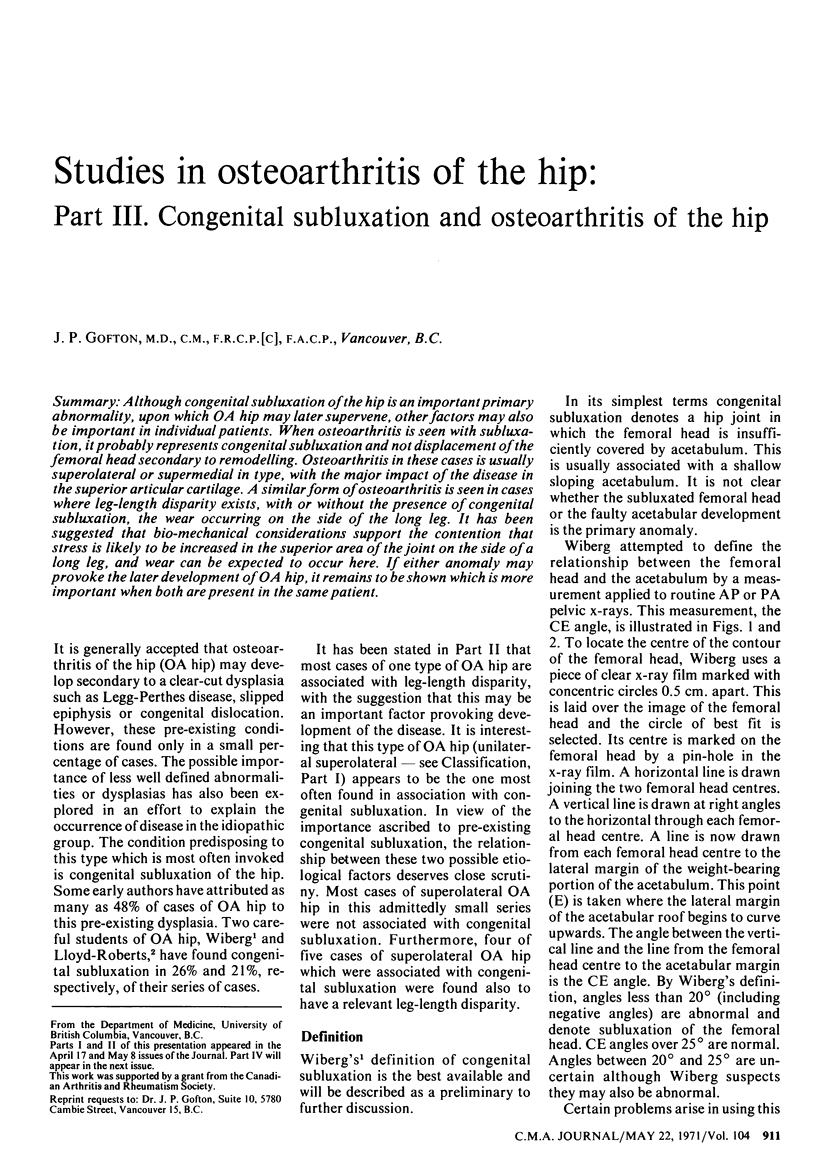
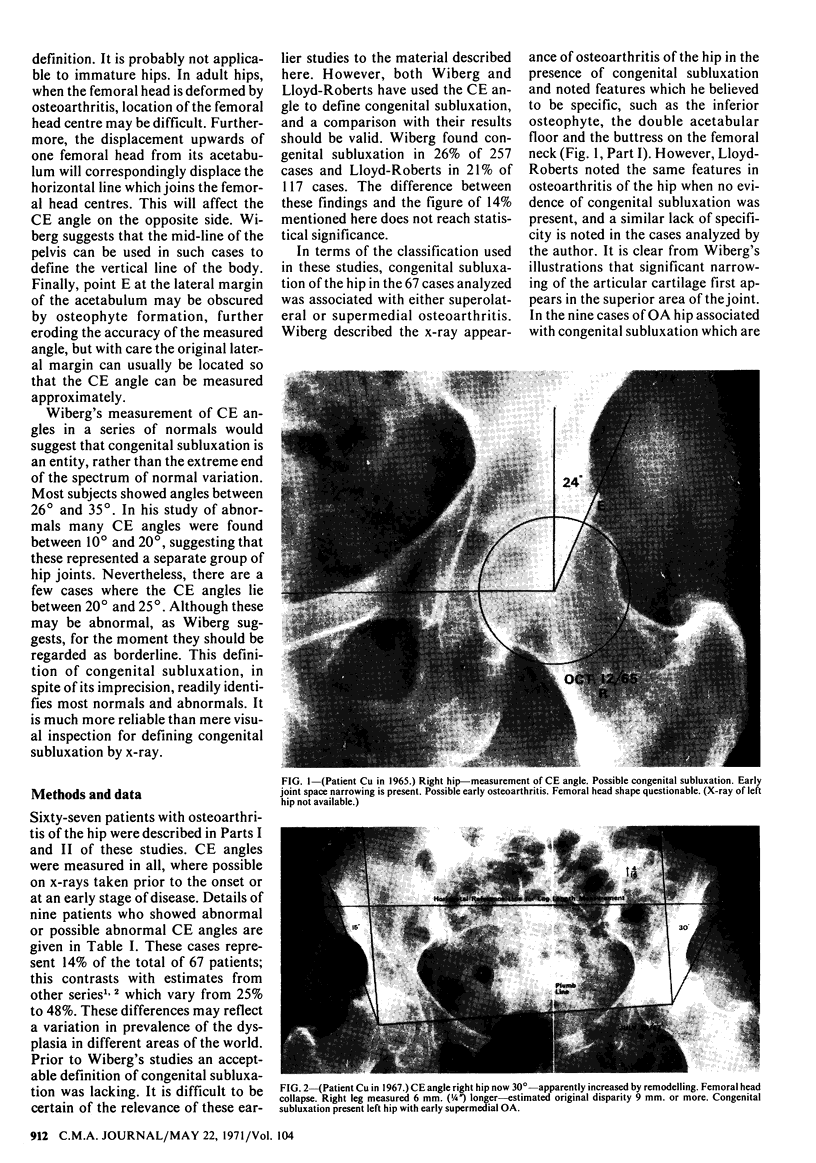
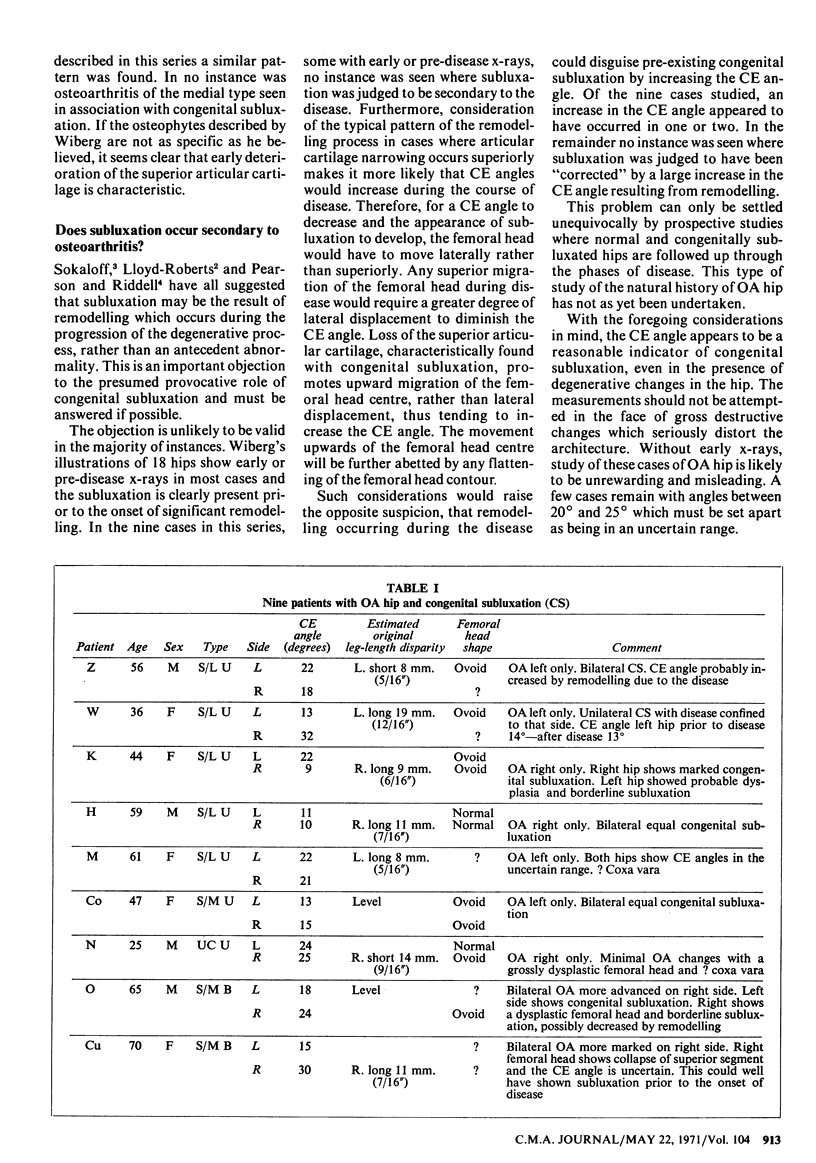
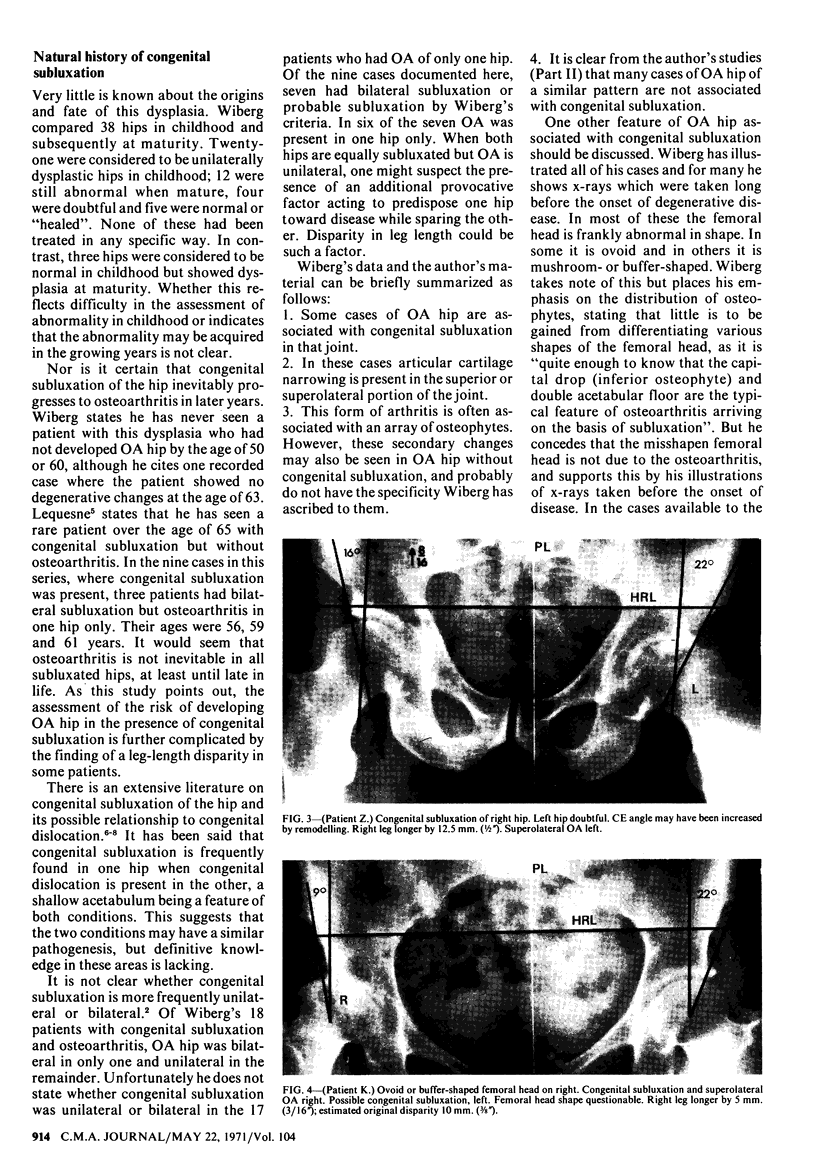
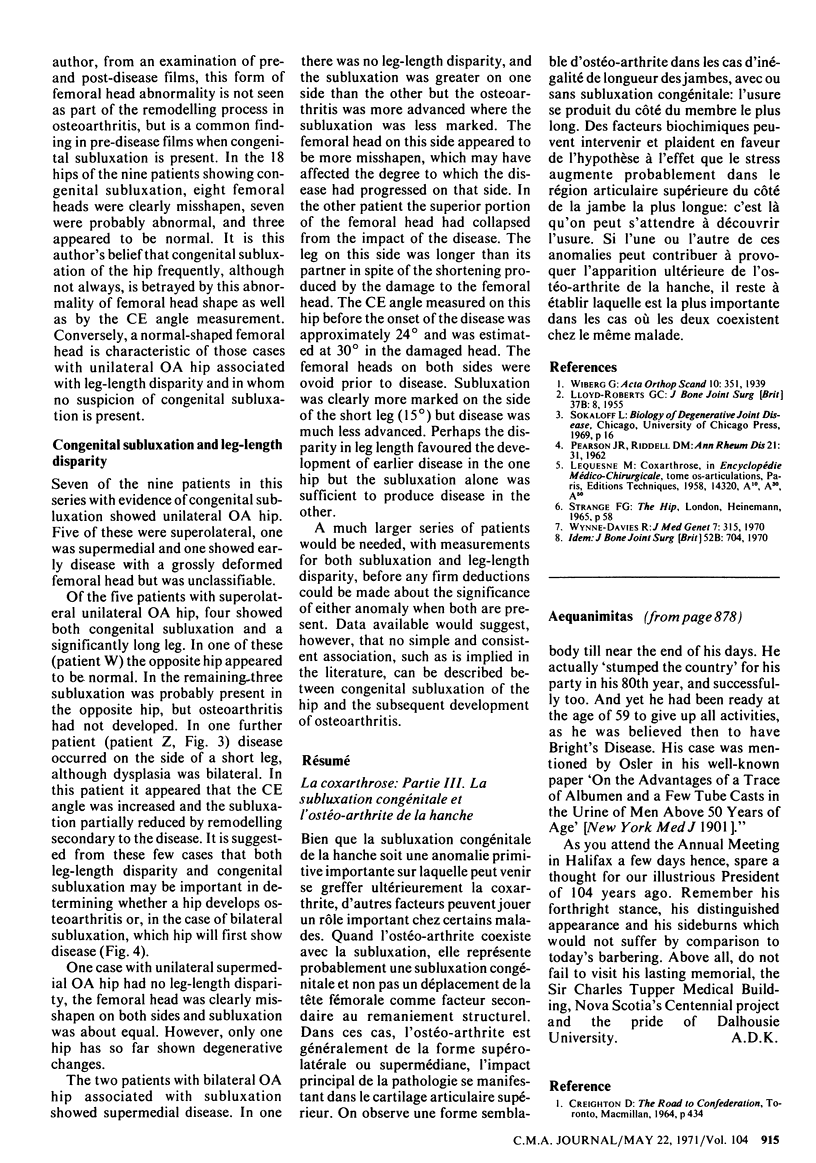
Images in this article
Selected References
These references are in PubMed. This may not be the complete list of references from this article.
- Wynne-Davies R. Acetabular dysplasia and familial joint laxity: two etiological factors in congenital dislocation of the hip. A review of 589 patients and their families. J Bone Joint Surg Br. 1970 Nov;52(4):704–716. [PubMed] [Google Scholar]






